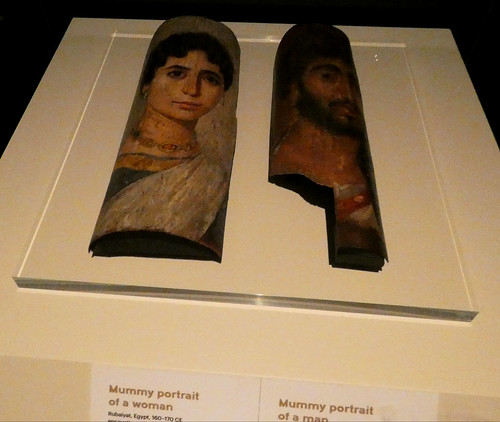Roman statue of Greek sea god Triton discovered during excavations in Kent
Roman Empire #RomanEmpire

The Triton statue has been carefully lifted and removed from the site for initial conservation works. Credit: Canterbury Archaeological Trust
A Roman statue of Triton, a Greek god of the sea, has been discovered during archaeological excavations in Teynham, Kent.
The site was found during investigations relating to a new housing development near the A2 London Road, which follows the ancient Roman Watling Street.
The Triton statue has been carefully lifted and removed from the site for initial conservation works which have revealed the detail of the piece.
Further research into the statue itself and the circumstances of its ritual burial are ongoing.
Dr Richard Hobbs, Senior Curator of Roman Britain, The British Museum said: “This is a really stunning piece of sculpture, undoubtedly of great significance to our understanding of Roman Britain and its place in the wider Roman Empire.
“It shows a Triton – half man, half fish – riding a sea monster. Although a few other fragments of similar sculptures are known from Roman Britain, nothing quite like this has been discovered before.”
The archaeological investigation works commenced late May 2023. Credit: Canterbury Archaeological Trust
During an initial site evaluation, fragments of chalk wall foundations and Roman cremation burials were discovered.
As a result, Swale Council, with advice from Kent County Council Heritage Conservation, required a 0.5 hectare archaeological excavation at site.
Elements of a 30m square walled enclosure surrounding a c.7m square structure were revealed.
Further exaction works suggested the structure relates to a Roman mausoleum which contained a roman coin dating back to c.320 to 330 AD.
The site also included Roman and possibly later burials with various grave goods.
The archaeological investigation works commenced late May 2023 by Canterbury Archaeological Trust (CAT) who were appointed to conduct the investigation.
The aim is to carefully bury and retain these key remains within the landscaped centre of the roundabout, making it accessible for generations to come.
Further research into the statue itself and the circumstances of its ritual burial are ongoing. Credit: Canterbury Archaeological Trust
Robert Masefield, Archaeology Director for RPS the project archaeological consultant confirmed: “We expected interesting Roman archaeology, perhaps a cemetery, but the finds including the lively and unique statue of a Triton and the mausoleum remains have by far exceeded that.
“These finds are now part of Teynham’s local legacy and the nations rich Roman story. Further study will place the findings in their full historical context.”
Simon Mason, Principal Archaeological Officer, Kent County Council stated: “This area of North Kent, where the main Roman road travelled close to the many inlets off the Swale is particularly rich in in Roman remains taking advantage of the sea and road connections.
“The Roman mausoleum is the latest spectacular discovery in Swale and is itself an outstanding and significant find which will add considerably to our understanding of the Roman landscape in this region.
“I am fortunate in my work to regularly see many remarkable archaeological discoveries in Kent, however seeing the uncovering of the Triton statue was a very special moment indeed.
“It will be fascinating to follow the research into the statue and find out more about the ritual burial of it.”